SRN Announces New Midday Programs Replacing Charlie Kirk Show
Salem Radio Network reveals its plans for the 12:00 noon to 3:00 pm ET daypart previously occupied by the late Charlie Kirk. Effective January 5, Alex Marlow, editor-in-chief at Breitbart News, will anchor the 12:00 noon to 1:00 pm ET –1 p.m. ET hour, followed by Scott Jennings, CNN political commentator and longtime conservative strategist, who expands his current SRN program to 1:00 pm to 3:00 pm ET. Salem Media SVP of content Phil Boyce comments, “This is an important moment for Salem. Salem has earned the trust of conservative audiences for decades, and we don’t take that lightly. Scott Jennings and Alex Marlow each bring a distinct voice, a rare
Jennings, CNN political commentator and longtime conservative strategist, who expands his current SRN program to 1:00 pm to 3:00 pm ET. Salem Media SVP of content Phil Boyce comments, “This is an important moment for Salem. Salem has earned the trust of conservative audiences for decades, and we don’t take that lightly. Scott Jennings and Alex Marlow each bring a distinct voice, a rare  ability to engage audiences, and real seriousness to the conversation. Together, they will carry the Salem legacy forward.” Meanwhile, “The Charlie Kirk Show” will continue as a podcast on Salem Podcast Network, and Salem Media will maintain its relationship with Turning Point USA. Executive producer Andrew Kolvet will continue as co-host of the podcast show. He says, “Salem has been so gracious through this process and even encouraged us to continue broadcasting the show on the Salem Radio Network. While ‘The Charlie Kirk Show’ team is excited to continue the live show and podcast in other venues, ultimately we agreed that Alex and Scott were the perfect hosts to take over on the radio portion. Both are great friends and extremely talented broadcasters. We are also grateful that Salem Media Reps will continue to represent and sell the time inside the show. While some of the details around how we want to distribute the show will change, our friendship and trust in Salem does not.”
ability to engage audiences, and real seriousness to the conversation. Together, they will carry the Salem legacy forward.” Meanwhile, “The Charlie Kirk Show” will continue as a podcast on Salem Podcast Network, and Salem Media will maintain its relationship with Turning Point USA. Executive producer Andrew Kolvet will continue as co-host of the podcast show. He says, “Salem has been so gracious through this process and even encouraged us to continue broadcasting the show on the Salem Radio Network. While ‘The Charlie Kirk Show’ team is excited to continue the live show and podcast in other venues, ultimately we agreed that Alex and Scott were the perfect hosts to take over on the radio portion. Both are great friends and extremely talented broadcasters. We are also grateful that Salem Media Reps will continue to represent and sell the time inside the show. While some of the details around how we want to distribute the show will change, our friendship and trust in Salem does not.”




 been an instrumental voice on OutKick, across FOX News Media, and for women across this country. I am thrilled that she will be part of our new expansion and provide a unique and fresh perspective on everything from culture trends to current affairs and continue to be a leading voice for young conservative women.” Gaines comments, “I started this journey of simply saying men shouldn’t play in women’s sports and OutKick and FOX News Media have supported me from day one. They provided me a platform to bring national attention to the transgender issue in sports and ignite change that will forever protect women living out their dreams in athletics. I’m beyond excited to launch my new show that will cover a variety of topics and highlight the stories of women who are fighting alongside with me.”
been an instrumental voice on OutKick, across FOX News Media, and for women across this country. I am thrilled that she will be part of our new expansion and provide a unique and fresh perspective on everything from culture trends to current affairs and continue to be a leading voice for young conservative women.” Gaines comments, “I started this journey of simply saying men shouldn’t play in women’s sports and OutKick and FOX News Media have supported me from day one. They provided me a platform to bring national attention to the transgender issue in sports and ignite change that will forever protect women living out their dreams in athletics. I’m beyond excited to launch my new show that will cover a variety of topics and highlight the stories of women who are fighting alongside with me.”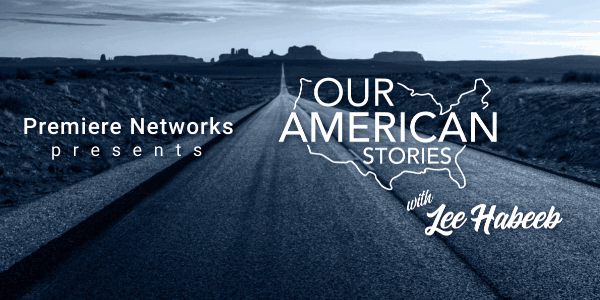
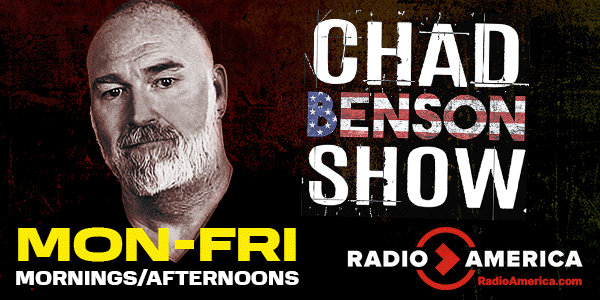
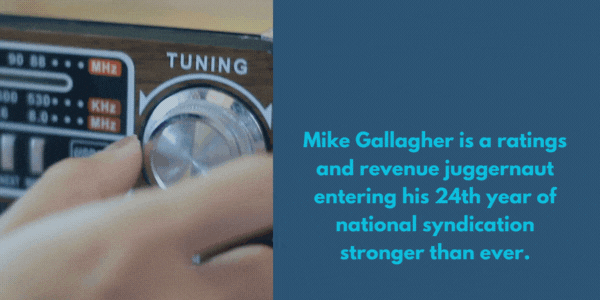
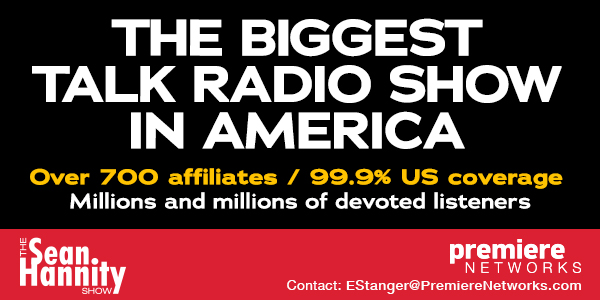
 1972. The company was headed by Dr. Jerrel Jones, who passed recently. His daughter, current owner and president Mary Ellen Jones, says, “My parents built The Milwaukee Courier and WNOV to give Milwaukee’s Black community a voice when few existed. Passing that responsibility forward was not taken lightly. Civic Media is committed to honoring that legacy while investing in the future of trusted media.” The company says that Dr. Robert “Biko” Baker will join as operations manager for both the radio station and newspaper. Civic Media CEO Sage Weil comments, “Acquiring The Milwaukee Courier and WNOV is both an opportunity and a responsibility. These are trusted institutions with deep roots in Milwaukee, and our role is to steward that legacy while investing in their future – modernizing operations, expanding digital reach, and ensuring they continue to serve the community with integrity. We’re proud to have Dr. Robert ‘Biko’ Baker lead this work.”
1972. The company was headed by Dr. Jerrel Jones, who passed recently. His daughter, current owner and president Mary Ellen Jones, says, “My parents built The Milwaukee Courier and WNOV to give Milwaukee’s Black community a voice when few existed. Passing that responsibility forward was not taken lightly. Civic Media is committed to honoring that legacy while investing in the future of trusted media.” The company says that Dr. Robert “Biko” Baker will join as operations manager for both the radio station and newspaper. Civic Media CEO Sage Weil comments, “Acquiring The Milwaukee Courier and WNOV is both an opportunity and a responsibility. These are trusted institutions with deep roots in Milwaukee, and our role is to steward that legacy while investing in their future – modernizing operations, expanding digital reach, and ensuring they continue to serve the community with integrity. We’re proud to have Dr. Robert ‘Biko’ Baker lead this work.”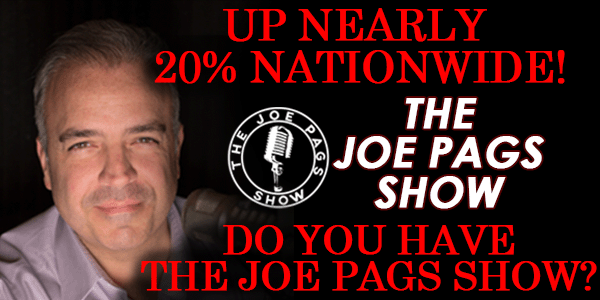



 and #2 in most past surveys – are gone from the ranker entirely. With that change, iHeartRadio’s “Stuff You Should Know” is the new #1, with Salem Podcast Network’s “The Charlie Kirk Show” at #2. Other changes for talk radio-related podcasts include Cumulus Podcast Network’s “The Shawn Ryan Show” rising five places to #4, Cumulus Podcast Network’s “VINCE” climbing two places to #10, and iHeartRadio’s “The Clay Travis and Buck Sexton Show” moving up seven places to #11.
and #2 in most past surveys – are gone from the ranker entirely. With that change, iHeartRadio’s “Stuff You Should Know” is the new #1, with Salem Podcast Network’s “The Charlie Kirk Show” at #2. Other changes for talk radio-related podcasts include Cumulus Podcast Network’s “The Shawn Ryan Show” rising five places to #4, Cumulus Podcast Network’s “VINCE” climbing two places to #10, and iHeartRadio’s “The Clay Travis and Buck Sexton Show” moving up seven places to #11. 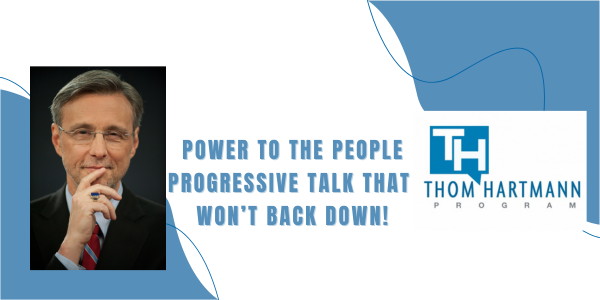
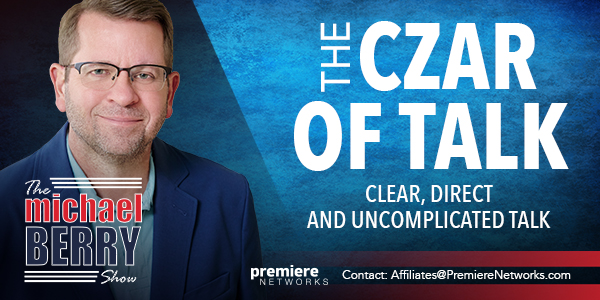
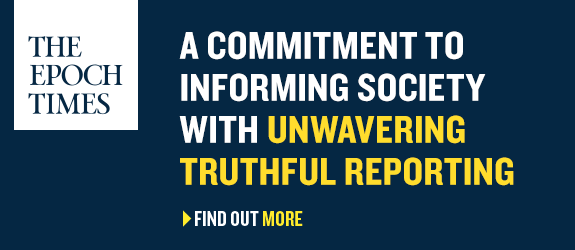
 UW-Green Bay’s men’s basketball team – says he will step away from his radio program in order to focus on his coaching duties. During his post-game press conference yesterday, Gottlieb said of his radio show, “As of now, we’re going to take a break from it. I’ve got to have a life. I’ve got to be there for these kids. I’ve got to really dig in because we’re building something cool here.”
UW-Green Bay’s men’s basketball team – says he will step away from his radio program in order to focus on his coaching duties. During his post-game press conference yesterday, Gottlieb said of his radio show, “As of now, we’re going to take a break from it. I’ve got to have a life. I’ve got to be there for these kids. I’ve got to really dig in because we’re building something cool here.” 
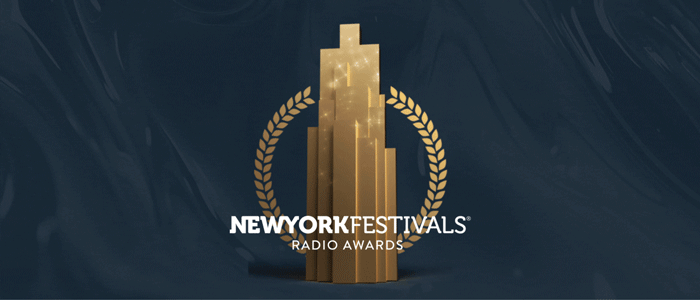
 controller. Coury has been overseeing the company’s treasury operations, accounts receivable, accounts payable, and traffic functions. Beasley Media Group CEO Caroline Beasley says, “John’s leadership, strategic insight, and strong financial acumen have been instrumental in strengthening our company’s financial foundation. His dedication and expertise will continue to play an important role in advancing Beasley’s fiscal efficiency and long-term growth.”
controller. Coury has been overseeing the company’s treasury operations, accounts receivable, accounts payable, and traffic functions. Beasley Media Group CEO Caroline Beasley says, “John’s leadership, strategic insight, and strong financial acumen have been instrumental in strengthening our company’s financial foundation. His dedication and expertise will continue to play an important role in advancing Beasley’s fiscal efficiency and long-term growth.”

 president of news/talk for Cumulus Media for nine years. Cumulus Media chief content officer Brian Philips states, “Bill is an esteemed leader, teacher and journalist. He possesses intellect, a gift for talent development and strict high standards. It has been our good fortune to work in the trenches with Bill during the overheated recent news cycle. Bill will always be our trusted advisor. We wish Bill great things in retirement and thank him for his uncountable accomplishments with Cumulus Media and our high-performing news/talk stations – particularly for his work programming our news/talk flagship, WMAL. His legacy is forever secure.” Hess comments, “I am grateful for these 48 years in the business I love, programming both music and spoken-word stations, and working with the most exciting and entertaining teams in radio. Concluding with the past 15 years at WMAL and Cumulus Media has been a true highlight.”
president of news/talk for Cumulus Media for nine years. Cumulus Media chief content officer Brian Philips states, “Bill is an esteemed leader, teacher and journalist. He possesses intellect, a gift for talent development and strict high standards. It has been our good fortune to work in the trenches with Bill during the overheated recent news cycle. Bill will always be our trusted advisor. We wish Bill great things in retirement and thank him for his uncountable accomplishments with Cumulus Media and our high-performing news/talk stations – particularly for his work programming our news/talk flagship, WMAL. His legacy is forever secure.” Hess comments, “I am grateful for these 48 years in the business I love, programming both music and spoken-word stations, and working with the most exciting and entertaining teams in radio. Concluding with the past 15 years at WMAL and Cumulus Media has been a true highlight.”
 company’s currently outstanding common stock, based on 6,556,621 shares outstanding as of December 11, 2025. After closing, these shares were returned to treasury and are no longer outstanding. Chief financial officer Samuel Bush says, “We are pleased to announce the completion of a privately negotiated stock repurchase transaction, which underscores our ongoing commitment to deliver value to our shareholders. This transaction reflects our confidence in the company’s long-term strategy and financial strength, while providing us with greater flexibility to manage our capital structure. We remain focused on disciplined capital allocation and generating a meaningful return for all stakeholders.”
company’s currently outstanding common stock, based on 6,556,621 shares outstanding as of December 11, 2025. After closing, these shares were returned to treasury and are no longer outstanding. Chief financial officer Samuel Bush says, “We are pleased to announce the completion of a privately negotiated stock repurchase transaction, which underscores our ongoing commitment to deliver value to our shareholders. This transaction reflects our confidence in the company’s long-term strategy and financial strength, while providing us with greater flexibility to manage our capital structure. We remain focused on disciplined capital allocation and generating a meaningful return for all stakeholders.”


 Murder,” “Joe and Jada,” “Dear Chelsea” with Chelsea Handler and “This Is Important” with “Workaholics” stars Adam Devine, Anders Holm and Blake Anderson. iHeartMedia CEO Bob Pittman states, “Audio podcasting has been the fastest-growing medium over the past 20 years, and now we’re thrilled to expand that experience with an exciting new category – video podcasts. Netflix has a leading video-first service, and this partnership perfectly complements our strong audio foundation. Working with Netflix – an important leader in entertainment – gives fans one more way to connect with the personalities they love and opens the door to new audiences, including viewers discovering these shows for the first time.”
Murder,” “Joe and Jada,” “Dear Chelsea” with Chelsea Handler and “This Is Important” with “Workaholics” stars Adam Devine, Anders Holm and Blake Anderson. iHeartMedia CEO Bob Pittman states, “Audio podcasting has been the fastest-growing medium over the past 20 years, and now we’re thrilled to expand that experience with an exciting new category – video podcasts. Netflix has a leading video-first service, and this partnership perfectly complements our strong audio foundation. Working with Netflix – an important leader in entertainment – gives fans one more way to connect with the personalities they love and opens the door to new audiences, including viewers discovering these shows for the first time.”

 says, “This interactive session brings together four distinguished executives representing key areas across today’s audio landscape, offering attendees an opportunity to learn practical leadership skills, modern management strategies, and actionable insights for navigating a rapidly evolving industry.” Panelists will include: Erik Hellum, chief operating officer, Townsquare Media Group; Dara M. Kalvort, VP of digital sales, StreamGuys; Kieran Geffert, SVP and market manager, Audacy San Francisco; and Mary Boyle, VP & general manager, WGN Radio Chicago – Nexstar Media Inc.
says, “This interactive session brings together four distinguished executives representing key areas across today’s audio landscape, offering attendees an opportunity to learn practical leadership skills, modern management strategies, and actionable insights for navigating a rapidly evolving industry.” Panelists will include: Erik Hellum, chief operating officer, Townsquare Media Group; Dara M. Kalvort, VP of digital sales, StreamGuys; Kieran Geffert, SVP and market manager, Audacy San Francisco; and Mary Boyle, VP & general manager, WGN Radio Chicago – Nexstar Media Inc. 


 rate increases. Cumulus argued, “Nielsen, a monopolist engaging in anticompetitive behavior, holds all of the power during contract negotiations, resulting in an unequal bargaining dynamic that is ripe for retaliation. For example, Nielsen can and has raised its rates significantly during negotiations.
rate increases. Cumulus argued, “Nielsen, a monopolist engaging in anticompetitive behavior, holds all of the power during contract negotiations, resulting in an unequal bargaining dynamic that is ripe for retaliation. For example, Nielsen can and has raised its rates significantly during negotiations. 
 Carr. Facing regulatory scrutiny, the San Francisco Bay Area station demoted well-regarded journalists and sharply curtailed its political coverage for months. As pressure has eased, KCBS has gradually resumed more ambitious reporting, reflecting tensions between regulatory oversight and editorial independence.” Carr accused the station of failing to operate in the public interest and threatened an investigation. This was enough for Audacy management to back off its reporting. Tau writes, “KCBS demoted a well-liked anchor and dialed back on political programming, people said. For months, reporters were dissuaded from pursuing political or controversial topics and instead encouraged to focus on human interest stories, according to the current and former staffers.” The piece notes that anchor Bret Burkhart, the one to first present the ICE actions on the radio, was demoted. He eventually left the station for another position.
Carr. Facing regulatory scrutiny, the San Francisco Bay Area station demoted well-regarded journalists and sharply curtailed its political coverage for months. As pressure has eased, KCBS has gradually resumed more ambitious reporting, reflecting tensions between regulatory oversight and editorial independence.” Carr accused the station of failing to operate in the public interest and threatened an investigation. This was enough for Audacy management to back off its reporting. Tau writes, “KCBS demoted a well-liked anchor and dialed back on political programming, people said. For months, reporters were dissuaded from pursuing political or controversial topics and instead encouraged to focus on human interest stories, according to the current and former staffers.” The piece notes that anchor Bret Burkhart, the one to first present the ICE actions on the radio, was demoted. He eventually left the station for another position. 
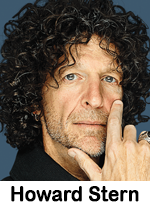 we are coming back for three years. Thanks to the good folks here at SiriusXM, who I told you, I really do adore. I was able to create Robin [Quivers] a more flexible schedule and so we’ll be back. I know you and I have talked about it privately Robin, even though you’re pretending you didn’t know the announcement. But I did check with my Robin to see that she was up for it as well because if Robin wasn’t up for it, then I wasn’t going to do it. I still do love being on the radio. I think the show is better than ever, I really do believe that in my heart.” Stern’s five-year, $100 million contract ends this month and speculation about whether he and SiriusXM would be able to come to terms on a new deal or even if Stern wanted to continue began last summer with many media pundits predicting the end of their relationship.
we are coming back for three years. Thanks to the good folks here at SiriusXM, who I told you, I really do adore. I was able to create Robin [Quivers] a more flexible schedule and so we’ll be back. I know you and I have talked about it privately Robin, even though you’re pretending you didn’t know the announcement. But I did check with my Robin to see that she was up for it as well because if Robin wasn’t up for it, then I wasn’t going to do it. I still do love being on the radio. I think the show is better than ever, I really do believe that in my heart.” Stern’s five-year, $100 million contract ends this month and speculation about whether he and SiriusXM would be able to come to terms on a new deal or even if Stern wanted to continue began last summer with many media pundits predicting the end of their relationship.
 Mason says, “Ramon is the perfect embodiment of what The Zone stands for – local sports passion, credibility, and connection. His instincts, stories, and relatability make our mornings stronger and our sports brand more authentic.” Foster comments, “I am thrilled to announce the extension of my media career with ‘104.5 The Zone’ for the foreseeable future. Engaging in lively discussions about sports, life, and pop culture with our passionate listeners each morning has been instrumental in my seamless transition from the NFL. The Zone’s impressive reach in Nashville, its surrounding areas, and nationwide through digital platforms is truly unparalleled. I eagerly anticipate continuing to grow alongside our fans, the station, and Nashville and surrounding cities for many years to come. I appreciate everyone who’s supported me, my wife and kids, Zone Family, and our listening audience I run into often while out in the community. Thank you again!”
Mason says, “Ramon is the perfect embodiment of what The Zone stands for – local sports passion, credibility, and connection. His instincts, stories, and relatability make our mornings stronger and our sports brand more authentic.” Foster comments, “I am thrilled to announce the extension of my media career with ‘104.5 The Zone’ for the foreseeable future. Engaging in lively discussions about sports, life, and pop culture with our passionate listeners each morning has been instrumental in my seamless transition from the NFL. The Zone’s impressive reach in Nashville, its surrounding areas, and nationwide through digital platforms is truly unparalleled. I eagerly anticipate continuing to grow alongside our fans, the station, and Nashville and surrounding cities for many years to come. I appreciate everyone who’s supported me, my wife and kids, Zone Family, and our listening audience I run into often while out in the community. Thank you again!”
 Trump’s historic Executive Order on artificial intelligence promotes America’s leadership in AI and advances our nation’s economic and national security interests. It does so by targeting excessive state regulations that would not only hold America back but insert ideological bias into AI models. President Trump’s decisive action also ensures a policy framework that protects children, prevents online censorship, respects copyrights, and safeguards communities. The FCC welcomes President’s Trump’s direction that the agency initiate a proceeding to determine whether to adopt a Federal reporting and disclosure standard for AI models that preempts conflicting State laws.”
Trump’s historic Executive Order on artificial intelligence promotes America’s leadership in AI and advances our nation’s economic and national security interests. It does so by targeting excessive state regulations that would not only hold America back but insert ideological bias into AI models. President Trump’s decisive action also ensures a policy framework that protects children, prevents online censorship, respects copyrights, and safeguards communities. The FCC welcomes President’s Trump’s direction that the agency initiate a proceeding to determine whether to adopt a Federal reporting and disclosure standard for AI models that preempts conflicting State laws.” Lien Senior Secured Notes due 2031. The company reports that it “received from Eligible Holders valid and unwithdrawn tenders and related Consents, as reported by its exchange agent, representing approximately $476.02 million in aggregate principal amount of Existing Notes, or approximately 97.580% of the aggregate principal amount of Existing Notes outstanding.” This move allows Urban One to kick the can down the road another three years in exchange for paying debt holders a higher rate of return.
Lien Senior Secured Notes due 2031. The company reports that it “received from Eligible Holders valid and unwithdrawn tenders and related Consents, as reported by its exchange agent, representing approximately $476.02 million in aggregate principal amount of Existing Notes, or approximately 97.580% of the aggregate principal amount of Existing Notes outstanding.” This move allows Urban One to kick the can down the road another three years in exchange for paying debt holders a higher rate of return.
 transitioned by Audacy and Cumulus Media from Infinity Sports Network to Westwood One Sports at the end of December. That move was announced in October with the companies saying that beginning December 29, Westwood One will assume programming and distribution for the majority of the lineup of syndicated sports programming and Audacy will continue to produce BetMGM Network programs. Gelb says, “It’s sad to see CBS Sports Radio/Infinity Sports Network closing its doors as we once knew it, but grateful for the memories and excited to see what the next chapter in my sports talk journey brings.”
transitioned by Audacy and Cumulus Media from Infinity Sports Network to Westwood One Sports at the end of December. That move was announced in October with the companies saying that beginning December 29, Westwood One will assume programming and distribution for the majority of the lineup of syndicated sports programming and Audacy will continue to produce BetMGM Network programs. Gelb says, “It’s sad to see CBS Sports Radio/Infinity Sports Network closing its doors as we once knew it, but grateful for the memories and excited to see what the next chapter in my sports talk journey brings.”

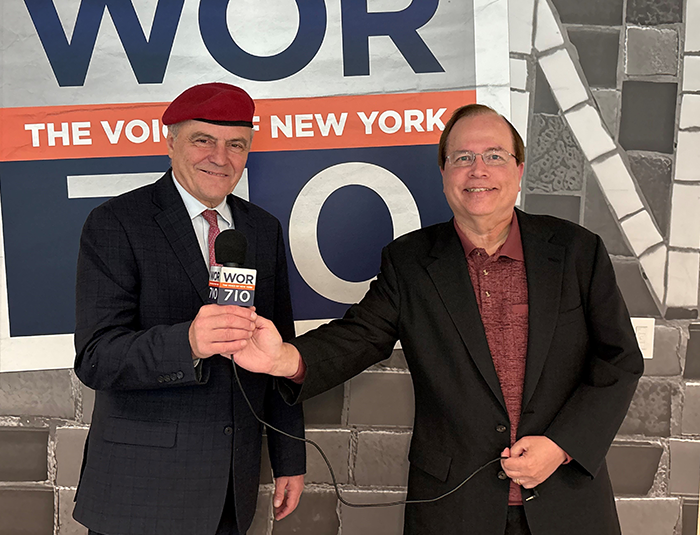
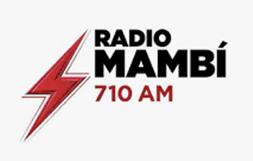 station featured a strong anti-communist tone. Station general manager Mike Sena says the reason for the change is financial. “Like our beautiful city, Radio Mambí, its audience and the media industry are evolving rapidly, which presents financial challenges for many in the market.” The station is continuing to broadcast, airing archived programming, music, and Spanish-language broadcasts of the NBA’s Miami Heat and MLB’s Miami Marlins. The Miami Herald says staffers that have lost their jobs include Jorge Luis Sánchez Grass, José Luis Nápoles, José Carlucho, Lilliet Rodríguez and Lucy Pereda.
station featured a strong anti-communist tone. Station general manager Mike Sena says the reason for the change is financial. “Like our beautiful city, Radio Mambí, its audience and the media industry are evolving rapidly, which presents financial challenges for many in the market.” The station is continuing to broadcast, airing archived programming, music, and Spanish-language broadcasts of the NBA’s Miami Heat and MLB’s Miami Marlins. The Miami Herald says staffers that have lost their jobs include Jorge Luis Sánchez Grass, José Luis Nápoles, José Carlucho, Lilliet Rodríguez and Lucy Pereda. 
 manager for the cluster that includes news/talk KMAJ-AM “The Big Talker,” sports talk KTOP-AM and four music brands. Lee announced her exit via social media saying, “After 11 years and 11 months, my position with Cumulus was eliminated. Reaching almost 12 years with a single employer is a remarkable feat in media. If you’ve listened, commented on social, came to an event, played a contest, or even waved at me while I was driving that huge van, thank you for engaging. The state of radio today can be hard to love. What’s next for me? TBD.”
manager for the cluster that includes news/talk KMAJ-AM “The Big Talker,” sports talk KTOP-AM and four music brands. Lee announced her exit via social media saying, “After 11 years and 11 months, my position with Cumulus was eliminated. Reaching almost 12 years with a single employer is a remarkable feat in media. If you’ve listened, commented on social, came to an event, played a contest, or even waved at me while I was driving that huge van, thank you for engaging. The state of radio today can be hard to love. What’s next for me? TBD.”
 At the very first CES in 1967, audio cassettes were disrupting 8-track tapes. Back to the future: Artificial Intelligence now threatens to disrupt almost everything.
At the very first CES in 1967, audio cassettes were disrupting 8-track tapes. Back to the future: Artificial Intelligence now threatens to disrupt almost everything.

 If you missed yesterday’s webinar, look for the replay which will be posted today at
If you missed yesterday’s webinar, look for the replay which will be posted today at 
 across the state of Wisconsin and based at WAUK, Waukesha, is doing her last program today (12/12). Matenaer, who works with co-host Greg Bach, recently announced her retirement after 44 years in the business. Prior to joining Civic Media three years ago, she served with Good Karma Brands’ news/talk WTMJ, Milwaukee in the newsroom and in morning drive.
across the state of Wisconsin and based at WAUK, Waukesha, is doing her last program today (12/12). Matenaer, who works with co-host Greg Bach, recently announced her retirement after 44 years in the business. Prior to joining Civic Media three years ago, she served with Good Karma Brands’ news/talk WTMJ, Milwaukee in the newsroom and in morning drive.
 Annual Digital Sales Mentorship Program. Candidates now have until December 29 to apply. MIW says, “This year-long program is a career-accelerating opportunity designed to strengthen the next generation of women leaders in digital radio sales. One outstanding female seller or manager will be selected to receive personalized, hands-on mentorship from a top industry expert; an opportunity that can reshape a career trajectory.”
Annual Digital Sales Mentorship Program. Candidates now have until December 29 to apply. MIW says, “This year-long program is a career-accelerating opportunity designed to strengthen the next generation of women leaders in digital radio sales. One outstanding female seller or manager will be selected to receive personalized, hands-on mentorship from a top industry expert; an opportunity that can reshape a career trajectory.”